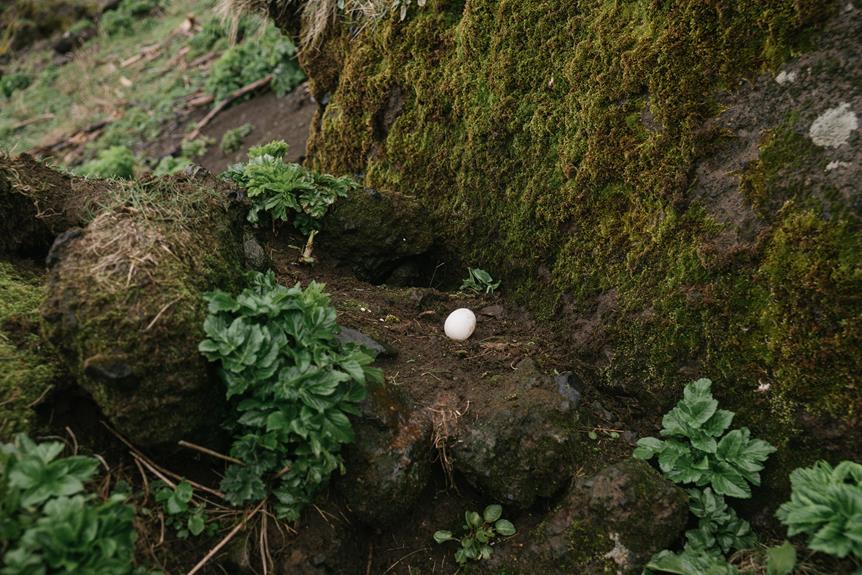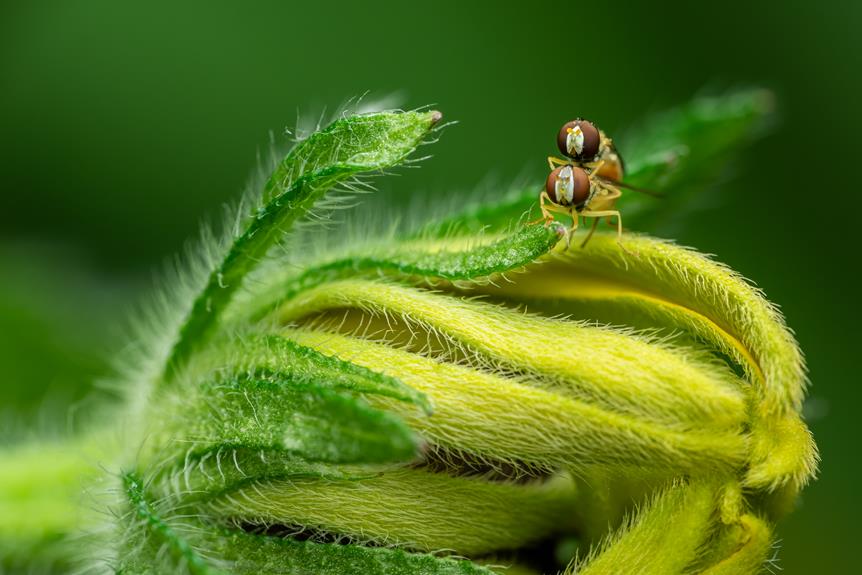Imagine stepping into the fascinating world of anole lizards, where you play a crucial role in ensuring the successful incubation of their precious eggs.
In this article, we will guide you through the essential steps to create the ideal environment for these delicate embryos.
From regulating temperature and maintaining optimal humidity levels to preparing the perfect nest and monitoring the development process, you will learn how to provide the utmost care for these little miracles.
Let's embark on this journey together and make every hatch a triumph!
Key Takeaways
- Maintaining a consistent temperature range of 80-85 degrees Fahrenheit is crucial for successful incubation.
- Monitoring humidity levels and keeping them between 70-80% is important for preventing drying out of the eggs.
- Creating a suitable nest with a soft substrate, adequate temperature, and humidity levels is essential for healthy embryo development.
- Regularly monitoring egg development through techniques like egg candling increases the chances of successful hatchings.
Understanding the Ideal Incubation Environment
To ensure successful egg incubation for your anole lizards, you need to understand the ideal incubation environment.
Understanding egg development and managing incubation conditions are crucial for the health and survival of the embryos.
Firstly, it's important to maintain a consistent temperature between 80-85 degrees Fahrenheit throughout the incubation period. This can be achieved using a reliable heat source such as a heating pad or heat lamp.
Secondly, humidity levels should be kept at around 70-80% to prevent the eggs from drying out. You can achieve this by misting the incubation container with water daily.
Additionally, it's essential to provide proper ventilation to prevent the build-up of harmful gases.
Lastly, regular monitoring of the eggs is vital to ensure they're developing properly.
Temperature Regulation for Anole Lizard Eggs
Maintaining a consistent temperature is crucial for the successful incubation of your anole lizard eggs. Anole lizards are ectothermic creatures, meaning their body temperature is regulated by the surrounding environment. To achieve optimal incubation conditions, it's important to create a thermal gradient within the incubator.
This means providing a range of temperatures, allowing the eggs to choose their preferred spot for development. Artificial incubators are a great tool for achieving this thermal gradient. These incubators are equipped with temperature controls that can be set to mimic the natural temperature fluctuations experienced by anole lizards in their native habitats.
Maintaining Optimal Humidity Levels
Are you monitoring the humidity levels and using appropriate measures to maintain optimal conditions for your anole lizard eggs?
Maintaining optimal humidity levels is crucial for the successful incubation of anole lizard eggs. The ideal humidity range for egg incubation is typically between 70% and 80%.
To control humidity, you can use a hygrometer to monitor the levels within the incubator. If the humidity falls below the desired range, you can increase it by adding water to the substrate or using a water spray bottle to mist the eggs.
On the other hand, if the humidity is too high, you can use a dehumidifier or increase ventilation to lower the moisture levels. It's important to maintain proper humidity to prevent mold growth, which can harm the developing embryos.
Nest Preparation and Placement for Successful Incubation
When preparing and placing the nest, it's important that you choose a suitable location to ensure successful incubation of anole lizard eggs. Here are some key considerations for nest preparation and incubation placement:
- Temperature: Select a spot that maintains a consistent temperature range between 80-85°F (26-29°C), as this is optimal for egg development.
- Moisture: Ensure the nest is in a location with adequate humidity levels, ideally around 70-80%. This helps prevent dehydration of the eggs.
- Substrate: Use a suitable substrate, such as a mixture of soil and sand, to create a soft, burrow-like environment for the eggs.
- Protection: Choose a spot that provides protection from predators and extreme weather conditions, such as excessive heat or rain.
- Accessibility: Keep the nest easily accessible for regular monitoring without disturbing the eggs, allowing you to maintain optimal conditions.
Monitoring Egg Development and Hatching Process
To ensure successful incubation and hatching, you should regularly monitor the egg development and hatching process for anole lizards.
One technique to assess the progress of egg development is egg candling. This involves shining a light source through the egg to visualize the internal structures. By observing the presence and movement of blood vessels, you can determine if the embryo is developing properly. Additionally, egg candling can help identify infertile or non-viable eggs, allowing you to remove them from the incubation environment.
Evaluating embryo health is another crucial step in monitoring the hatching process. This involves carefully examining the embryos for any abnormalities or deformities. Any signs of discoloration, malformation, or lack of movement should be noted, as these may indicate potential problems or developmental issues.
Regular monitoring and evaluation of egg development and embryo health will greatly increase the chances of successful hatchings for your anole lizard eggs.
Frequently Asked Questions
Can Anole Lizard Eggs Be Incubated With Other Reptile Eggs?
Incubating anole lizard eggs with other reptile eggs has both pros and cons. It can provide a diverse incubation environment, potentially increasing hatching success. However, there are risks of disease transmission and competition for resources.
How Long Does It Take for Anole Lizard Eggs to Hatch?
Anole lizard eggs typically take around 30-45 days to hatch. The incubation temperature plays a crucial role in determining the hatching time. Factors such as temperature fluctuations and humidity levels can affect the incubation period.
What Should I Do if the Temperature in the Incubator Fluctuates?
If the temperature in the incubator fluctuates, it is crucial to maintain a stable temperature for successful egg incubation. Consistency in temperature is vital as it ensures proper development and hatching of the anole lizard eggs.
Can I Move the Anole Lizard Eggs After They Have Been Laid?
Moving anole lizard eggs can be risky. While it may be necessary in certain situations, such as if the eggs are in danger, it can disrupt the incubation process and decrease the chances of successful hatching.
What Are the Signs That an Anole Lizard Egg Is Not Viable?
If an anole lizard egg is not viable, common signs include discoloration, mold growth, or a foul odor. If you encounter these signs, handle the egg carefully, dispose of it properly, and adjust temperature fluctuations during incubation.
Conclusion
In conclusion, ensuring successful egg incubation for anole lizards requires careful attention to the ideal incubation environment, including temperature regulation and maintaining optimal humidity levels.
Nest preparation and placement also play a crucial role in the hatching process.
By monitoring egg development and being proactive in addressing any challenges that may arise, breeders can increase their chances of successful incubation.
While some may argue that this process requires significant effort and resources, the rewards of successfully hatching healthy anole lizards make it well worth the investment.

